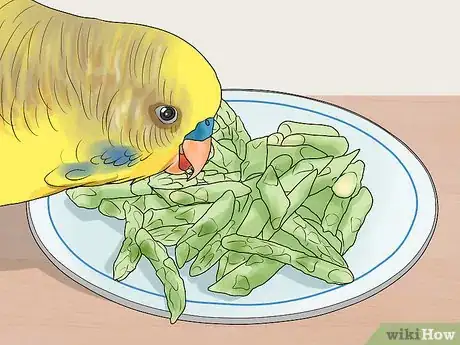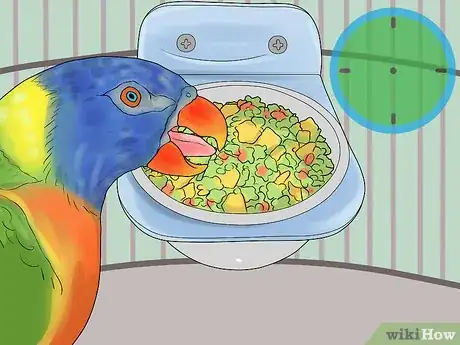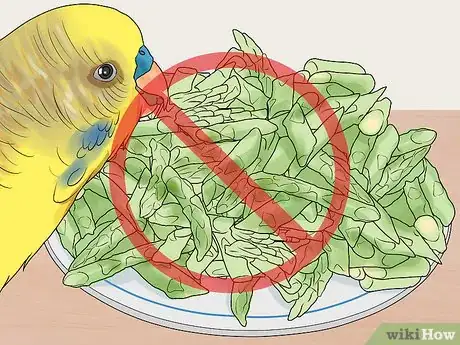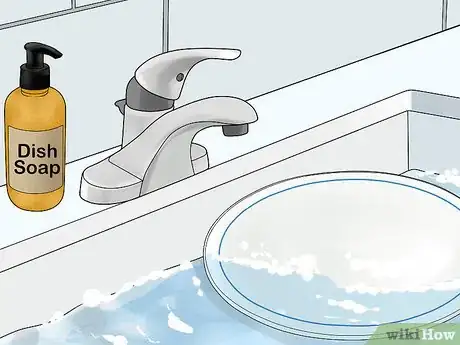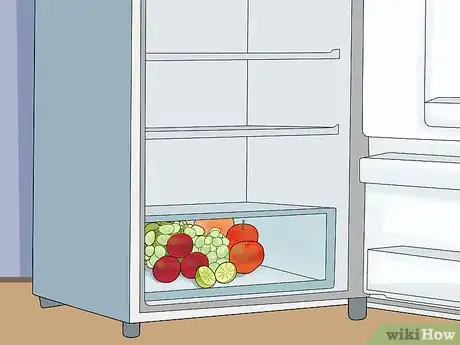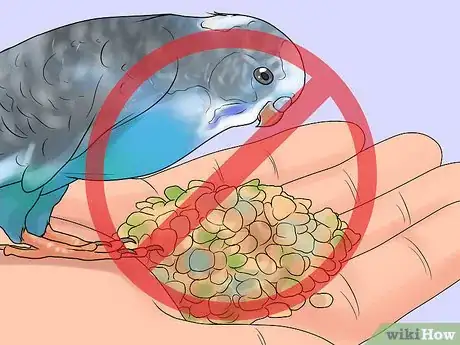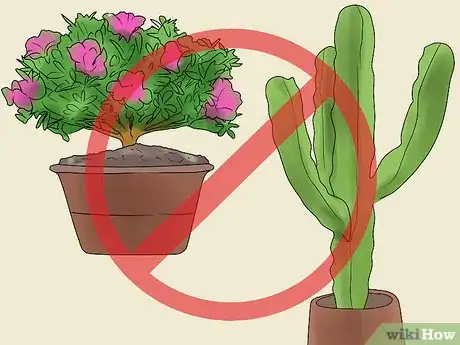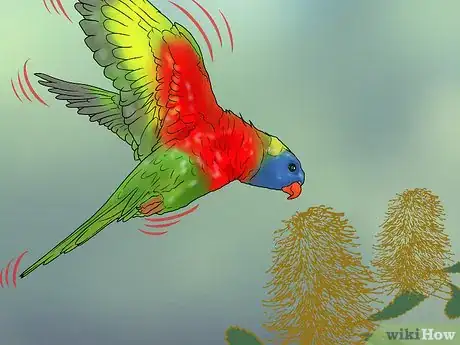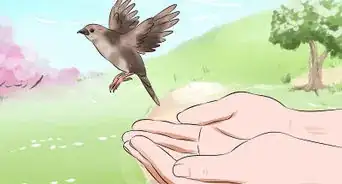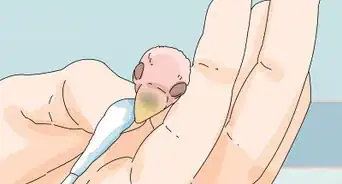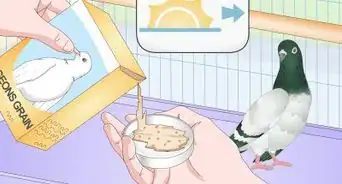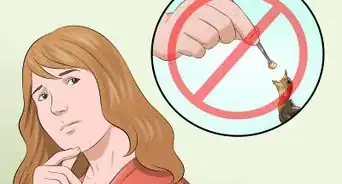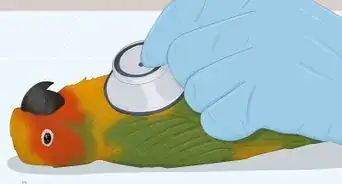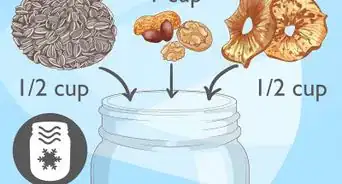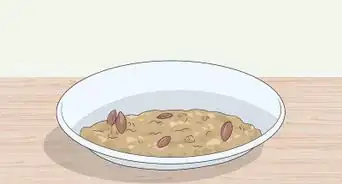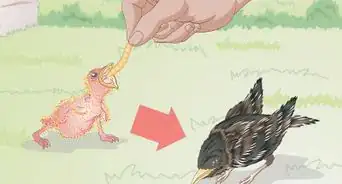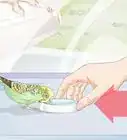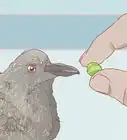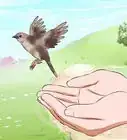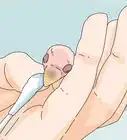This article was co-authored by Pippa Elliott, MRCVS. Dr. Elliott, BVMS, MRCVS is a veterinarian with over 30 years of experience in veterinary surgery and companion animal practice. She graduated from the University of Glasgow in 1987 with a degree in veterinary medicine and surgery. She has worked at the same animal clinic in her hometown for over 20 years.
There are 8 references cited in this article, which can be found at the bottom of the page.
This article has been viewed 29,547 times.
Lorikeets are beautiful tropical birds that make great pets. The distinguishing feature from other parrots, though, is that they eat primarily soft foods and rely heavily on nectar. As a result, feeding lorikeets can be a challenge for the novice bird owner. However, by providing the right type of food, timing your feedings properly, and providing safe food, you'll be able to give your lorikeet a complete and satisfying diet.
Steps
Providing Food
-
1Purchase pre-made nectar from a pet store. Nectar is the main source of food for lorikeets kept in captivity. Without nectar, your lorikeet will not thrive and could possibly die. To serve your lory nectar, simply follow the directions on the product you purchase. Some popular types of products include:
- Liquid foods that don't require you to add water.
- Dry formulas that must be mixed with water and frozen.[1]
-
2Give your lorikeet fruits. Fruits should be a major supplement to your lorikeet's nectar diet. Serve fruit salad-type meals in a small serving dish in addition to a full serving of nectar. The process of providing your bird fruit should be an active one – try different fruits until you find ones they like. However, make sure they eat several types of fruit instead of just one.
- You might find that they like overripe fruit instead of ripe fruit.
- Cut fruit into small pieces – no bigger than a half to a quarter inch cube (6 mm to 12 mm).
- Offer your bird apple cherries (without pits), pears, apricots, plums, figs, grapes, raspberries, grapefruit, and different types of melon.[2]
Advertisement -
3Provide vegetables. Serve sliced, shredded, or diced vegetables as a supplement to your lory's overall diet. Vegetables should not constitute more than a fifth of your bird's diet. However, vegetables can provide valuable vitamins and nutrients your bird does not get elsewhere.
- Like with fruit, serve vegetables in very small pieces.
- Consider providing your lory with bok choy, peas, asparagus, corn, cucumber, kale, broccoli, parsnip, or zucchini.
- Avoid avocado.[3]
-
4Provide fresh water every day. Fresh water should be served in a shallow water dish. You should change the water and wash the dish every day. In addition, depending on the size of the dish and your bird, monitor the dish to make sure there is enough water throughout the day.[4]
Timing Feedings
-
1Provide food at least twice a day. Because of the nature of the lory's feeding habits, you should provide your bird with food at least twice a day. This will allow your bird to feed for a couple of hours at a time before you remove or replace their food. In addition, providing your bird with food throughout the day will mimic the lory's foraging habits in the wild.[5]
- Put food out fresh in the morning and in the late afternoon. In addition, if you can, provide your lorikeet fresh food in the middle of the day.
-
2Change the food every few hours. Lories will thrive best with fresh food. Because of this, you should change their food every few hours. In addition, because lory food consists of fresh fruits, vegetables, and nectar, it could develop bacteria after a couple of hours. This could wind up making your bird sick. As a result, discard any uneaten lory food after three to four hours.[6]
-
3Avoid overfeeding. Observe your bird's eating habits. If you notice that there is a lot of food left after your bird has eaten, you should reduce the amount of food you provide to your bird. In addition, if you notice your bird growing larger, you should consult your vet about reducing the amount of food you provide your lory.[7]
Maintaining Health and Safety
-
1Clean the dishes you use to feed your lorikeet. Like with your own food, you should wash lory serving dishes after every use. This is because bacteria can quickly grow on uncooked fruits, vegetables, nectar, and pollen. If you don't clean your serving dishes properly, your lory could become sick.[8]
-
2Store your lorikeet food properly. Keep fruits and vegetables in a refrigerator if appropriate. If fruits or vegetables begin to spoil, discard them. In addition, keep nectar or pollen refrigerated or frozen as indicated by the directions on the product. Finally, pay attention to use-by dates, and discard any nectar or pollen products when they are no longer good.[9]
-
3Avoid feeding them seeds. While some lorikeets may snack on different seeds from time-to-time, their gizzards are often not powerful enough to crush most seeds. As a result, lorikeets do not depend on seeds as a substantial part of their diet. If you feed them a lot of seeds, they will not be able to get enough nutrition to thrive.[10]
- As an option, you can provide your lorikeet with soft seeds every so often.
-
4Keep your lorikeet away from dangerous plants. There are many plants that could hurt or kill your lorikeet. As a result, you need to be diligent about keeping dangerous plants out of your lorikeet's habitat. Some dangerous plants include:[11]
- Azalea
- Buttercup
- Cactus
- Cedar
- Clover
- Mimosa
-
5Provide the right kinds of food for wild lorikeets. Wild lorikeets require some special precautions. Plant flowers that the birds are attracted to naturally, such as bottlebrush plants, banksias, and grevilleas. If you offer sugary liquid to the birds, then make sure to keep the feeders extremely clean. Lorikeets may get sick and even die if the feeder is not clean.[12]
References
- ↑ http://animals.mom.me/adaptations-lorikeet-9218.html
- ↑ https://vcahospitals.com/know-your-pet/lories-and-lorikeets-feeding
- ↑ https://vcahospitals.com/know-your-pet/lories-and-lorikeets-feeding
- ↑ https://vcahospitals.com/know-your-pet/lories-and-lorikeets-feeding
- ↑ http://www.faunarescue.org.au/bird-lorikeets.htm
- ↑ http://www.environment.nsw.gov.au/animals/TheDangersOfFeedingLorikeets.htm
- ↑ https://www.beautyofbirds.com/feedingwildbirds.html
- ↑ https://vcahospitals.com/know-your-pet/lories-and-lorikeets-feeding
- ↑ http://www.lorikeets.com/feeding.htm
About This Article
To feed a lorikeet, you can purchase pre-made nectar from a pet store, which is the main source of food for lorikeets. Also, fruit is a major supplement to your lorikeet's nectar diet, so you should feed it things like apples, plums, figs, and grapes. However, try to cut the fruit into chunks no bigger than a half inch cube. You can also feed your lorikeet shredded or diced vegetables, although they should not constitute more than a fifth of your bird’s diet. Additionally, aim to feed your bird twice a day, ideally in the morning and late afternoon, to match its natural feeding habits. Also, don't forget to provide fresh drinking water every day. For more tips from our Veterinary co-author, including how to maintain health and safety standards for your avian friend, read on!


